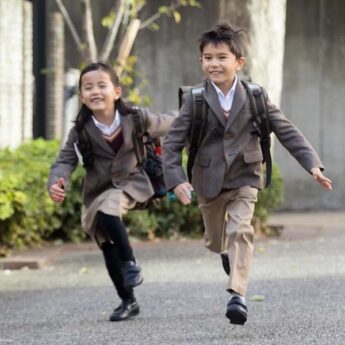As the British School in Tokyo (BST) prepares for its new campus at the heart of Mori Building Co., Ltd.’s massive Toranomon–Azabudai development, the long-time anchor of Tokyo’s educational landscape also welcomes a new leader.
Wales native Paul Tough has come aboard as principal, bringing 20 years of experience in Asia to BST. He comes to Japan from Hong Kong, where he was deputy head of West Island School for eight years followed by five years as head of Discovery Bay International School.
In the excitement of the transition and news of the Azabudai project, ACUMEN sat down with Tough at BST’s Shibuya campus to find out what the changes mean for the school and its students.
Why is a British education attractive in Japan?
I certainly think parents in Japan see a British education as a mark of quality, and we have that pursuit of excellence in everything that we do. We’re trying to ensure that we retain that element of Britishness but also connect with the context and the culture around us. The demographics of the school are changing, and we now have a higher proportion of families which are bicultural. Rather than being here for a short time, they see Japan as home. We shape our education to this, whether through our language provision, various outdoor activities that have cultural exchanges or other programmes. That is a strong part of the school and one that I think parents are attracted to in particular.
How will the Azabudai location affect this?
It’s interesting in terms of the connections that we have with a variety of institutions and businesses. We’re connected with 60–70 organisations, and I can only see that our position in Azabudai will be highlighted by this. We have very strong partnerships with other educational institutions in Tokyo, including Shibuya Kyoiku Gakuen and Showa Women’s University. Without their support, the school wouldn’t be able to take advantage of this position now. It has very much been a partnership with them to get the school to this stage. And now we’re entering into partnership with a third ally, essentially, with Mori Building. So, we are really intertwined with the educational landscape of Tokyo, but also the business landscape.
How did the arrangement with Mori come about?
It’s certainly been going on for a number of years. The Board of Trustees and previous principal Brian Christian were involved in those negotiations for five or six years. I think being chosen is a testament to the reputation of this school, as well as the hard work and visionary thinking of the board and friends of the school.
How will the new facility benefit BST?
In terms of scale, it’s going to be significant. In the centre of the city, we will have a space the design of which has been driven by a particular approach to teaching and learning. The design is driven by a pedagogical philosophy and approach—particularly one where children are inquiring and investigating. The spaces are flexible—walls are able to be collapsed—allowing for different types of activities and group sizes. Yes, it’s a pretty building, but, inside, a lot of thought has been given to the appropriateness of the spaces for the children and the age groups that we have there.
It’s also a very airy, bright environment. There’s a lot of glass inside, so you can see into the different areas. And it’s responsive and flexible to the changing needs of education. We can better help children develop transferable skills by working collaboratively, working in teams and using technology in a judicious fashion.
How does the project’s nature focus benefit BST?
Even though we will be right in the heart of the city, the way that the school has been designed is very much with a sense of the outdoors. Each floor has a significant outdoor space—built into a balcony area—which will allow the children to get outside and run around.
The outdoor and garden areas will support the forest and beach approaches to primary education. This is something that we’re looking to develop quite explicitly, and also to align that with principles of Reggio Emilia and inquiry-based learning. The idea is that the children will have access to outdoor areas as an extension of their learning environment, creating an almost continuous learning space. These are not just gardens and places where they can go and sit down, they are areas for learning and investigation, areas where they can get dirty and build things and create.
Did architect Thomas Heatherwick and BST work together on planning?
Yes, during the initial planning and the initial brainstorming, the school shared what was wanted, elements such as flexibility and open spaces. So, they were able to build something which combined the overall aesthetic with the actual functionality, in terms of impact for learning. That was all part of the original brief.
How are you keeping up with technology?
It will be a campus which will allow for one-to-one devices to be used in a mobile form right through. We won’t necessarily have fixed desktop computers. The children will have access to mobile devices which can be used in a formal setting in the classroom but also outside, in the communal areas of the school. And there is flexibility to use things such as the walls more dynamically. Rather than just having them to hang a board on, there are walls that can be written on, and the glass partitions between certain things can also be written on and wiped off at the end of the day. We’re making the best use of the facility for learning in every way possible.







